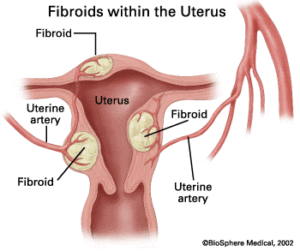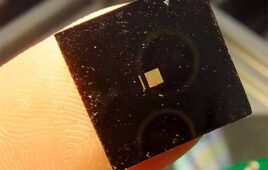
[Image from the U.S. Department of Health and Human Services]
Effective medical alternatives to surgical procedures will include novel selective progesterone receptor modulators (SPRMs) including Allergan and Gedeon Richter’s ulipristal, Bayer’s vilaprisan, and Repros’s Proellex – and gonadotropin-releasing hormone (Gn-RH) antagonists including AbbVie’s elagolix, Myovant’s relugolix and ObsEva’s OBE2109. Hysterectomies and myomectomies are the current procedures for long-term management of uterine fibroids.
Uterine fibroids are muscular tumors that grow in the wall of the uterus, according to the Office on Women’s Health, part of the U.S. Department of Health and Human Services. Fibroids are usually non-cancerous but are still hard to live with. They can grow in varying sizes, from apple seed sized to grapefruit sized.
Approximately 20 to 80% of women get uterine fibroids by the time they’re 50 years old. It is most common in women who are in their 40s and 50s. The cause of fibroids is unknown, but hormones and genetics play a factor.
Fibroids are diagnosed with an ultrasound, magnetic resonance imaging, X-rays, CT scans, hysterosalpingogram or sonohysterogram.
Gn-RH medications are typically delivered by injection, nasal spray or implants. They are designed to shrink fibroids and are sometimes used before surgery to help make fibroid removal easier.
Decision Resources Group also forecasts that the drug treatment rate will increase gradually as pharmacological treatment options for long-term management of uterine fibroids increase. Low-cost hormonal contraceptives, tranexamic acid and NSAIDs will continue to be the main drug therapies for controlling heavy bleeding that comes with uterine fibroids.
With the increase of drug therapies, Decision Resources Group predicts that the number of surgical procedures will decrease.
“Medical alternatives, for instance, SPRMs and the second-generation, orally administered Gn-RH antagonists, which effectively control heavy menstrual bleeding and can bypass the need for surgical procedure, will be preferred by patients who opt to stay on drug therapy until menopause,” said Decision Resource Group analyst Jing Wu in a press release. “The adoption of these novel therapies will be key in driving significant expansion of the uterine fibroids therapeutic market within the 2016–2026 forecast period.”
[Want to stay more on top of MDO content? Subscribe to our weekly e-newsletter.]





